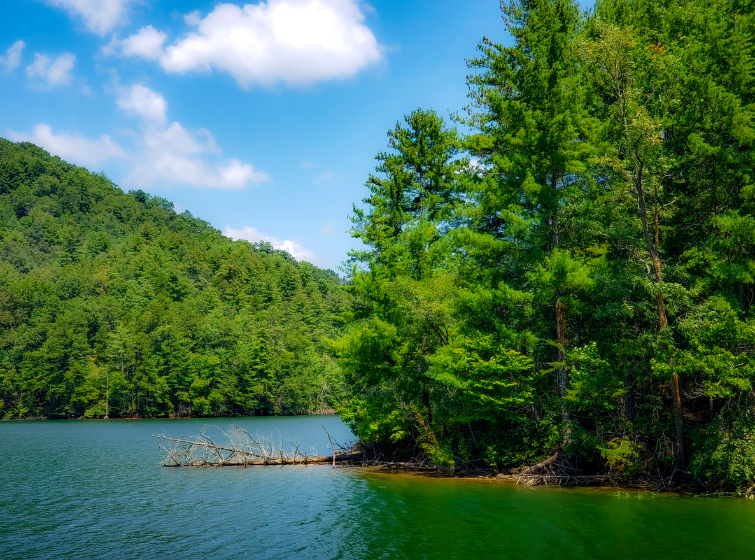Updates & Blog
Mountain forest majesty: rooted in conservation on International Mountain Day

Today is International Mountain Day! Did you know… The mountain forests of the southeastern United States are so much more than beautiful “Instagram worthy” vistas? In fact, they are actively protecting and supporting clean air and water, wildlife habitat, community health and more. In the spirit of the United Nations’ 2023 International Mountain Day theme, “restoring mountain ecosystems,” we’ll explore why these forests matter and what our partners are doing keep them healthy and thriving.
Breathe Deep

Forests are like giant air purifiers. In addition to contributing to clean air locally, southern mountain forests (and southern forests in general) contribute to the global fight against rising carbon levels. Trees naturally sequester carbon by absorbing it into their mass and roots during photosynthesis, preventing the greenhouse gas from entering and warming the atmosphere. Increasing carbon storage, decreasing the use of fossil fuels and strengthening forest resilience is key to mitigating the negative effects of a changing climate.
Forests to Faucet

The relationship between mountain forests and water quality isn’t just important to their surrounding communities. Even if you don’t live right by a forest, your drinking water likely filters through a forest before it makes its way to your faucet. Healthy, sustainably-managed forests are linked to safe and reliable drinking water, less need for water treatment (reducing treatment cost), and less energy and chemicals used in drinking water treatment processes. In the Southeast, more than 44% of the total water supply, or about 98 trillion gallons, comes through state and private forests before it makes its way into waterbodies.
Through a successful voluntary Best Management Practices (BMP) program, southern states collaborate with land managers and other key partners to protect water quality. The South’s collaborative, non-regulatory approach to BMP implementation has produced healthy working forests that support landowners’ economic goals while enhancing environmental health and water quality.
Collaboration for Conservation

International Mountain Day isn’t just about admiration; it’s a reminder of the importance of working together, sharing knowledge and applying conservation practices that make a real difference. Restoration projects, invasive species management, and sustainable land practices aren’t just feel-good efforts; they’re practical steps to ensure these important ecosystems thrive and achieve forest management goals. Utilizing support from federal funding, state forestry agencies and partners are implementing a wide range of programs and priorities to support southern forests, including mountain forests.

In addition to $200 million to state forestry agencies to implement the highest priorities in each state’s unique Forest Action Plan, the investments support reforestation, forest health and climate-smart management practices, among other important forestry programs. For example, funding to support reforestation is being used on the ground in the South to upgrade state-run seedling nurseries, increasing their capacity, productivity and efficiencies to get more seedlings into the hands of landowners. Additionally, southern state forestry agencies are utilizing investments in forest health priorities across the region to support early detection and rapid response with targeted pest and disease treatments. These include programs to address forest pests like the emerald ash borer, spongy moth and hemlock woody adelgid, as well as non-native invasives like wavyleaf grass.
With projections showing that 23 million acres of all southern woodlands could be lost by 2060, we must continue to work hard to support our forest landowners, ensuring they have the resources and incentives to keep their forests viable and intact.